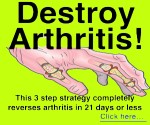Wound care or wound healing. This video is on how to heal wounds faster, wound healing foods, vitamins, after surgery.
This video is about general advice on foods and lifestyle factors that help promote wound healing. I’ve received a lot of messages to make a video on how to make wounds heal faster after surgery. I hope my tips help! Please remember if you’re worried about your wound or just want to be sure it’s ok. It’s always best to speak to your nurse, doctor or pharmacist so they can assess and advise appropriately.
WOUND HEALING FACTORS:
Eat well, heal well: Wound healing and nutrition guide: https://www.esht.nhs.uk/wp-content/uploads/2018/02/0679.pdf
– The above nutrition guide also gives information for diabetic patients and requirement of good blood sugar levels.
HYDRATION: Dehydrated skin is less elasticated, more fragile and susceptible to breakdown. Dehydration also reduces the efficiency of blood circulation which will impair the supply of oxygen and nutrients the wound desperately needs for the healing process.
Aim for 6-8 glasses of water per day unless recommended otherwise by your healthcare professional.
PROTEIN: Deficiency can impair the rebuilding and remodelling stage of wound healing. It’s also been reported that protein deficiency can cause impairment of collagen production which reduces the wound strength and increases the risk of infection.
Protein rich foods include meat, poultry, eggs, beans and tofu – Link further above in the description to a helpful guide that explains what to eat for each tip, how much to eat and various other information for a healthy diet.
ENERGY: The main source of energy for your body and for wound healing and carbohydrate and fats. Collagen production takes the most energy. Calorie needs for healing increase with increasing size and complexity of the wound – Now if its needed your doctors will involve dieticians to help you with this.
The reason why you need the energy and carbohydrate availability is because if you don’t your body will convert those helpful proteins we mentioned earlier into energy. Fats also have a key role in structure, function of cell membranes and again preventing the body from using proteins for energy.
VITAMINS & MINERALS: Eating a varied and balanced diet should get you all of these. Supplementation is sometimes required which is usually initiated by dieticians for chronic wound healing and malnutrition.
The most important vitamins for wound healing include Vitamin A, B and the main one Vitamin C as it helps with collagen production, cross-linking as well as the formation of new blood vessels.
Vitamin C is found is a wide variety of fruits and vegetables. Such as oranges, orange juice, strawberries, broccoli. Food sources for all vitamins: https://www.nhs.uk/conditions/vitamins-and-minerals/iron/
MINERALS: Zinc, copper and iron are the main ones involved in wound healing. Again eating a varied and balanced diet should get you all of these. Food sources for all minerals: https://www.nhs.uk/conditions/vitamins-and-minerals/iron/
SMOKING: If you do smoke please try to stop and quit. Smoking delays wound healing because various reasons it reduces oxygen supply to the wound, it raises blood sugar levels and its been shown to increase pain at the wound site.
WHEN TO SEEK MEDICAL ADVICE:
If a wound becomes infected, it may:
• Become more painful.
• Look red or swollen.
• Weep or leak some blood-like liquid, pus or blood.
• Have an unpleasant smell.
If you develop a high temperature, notice any of the signs mentioned above, or have any concerns about your wound, then contact your nurse or doctor.
This is general wound advice for more information always speak to your nurse or doctor.
Want to see more videos about everything health and pharmacy? Let me know in the comments below. Subscribe for new videos ▶https://www.youtube.com/c/AbrahamThePharmacist
LET’S CONNECT:
http://instagram.com/AbrahamThePharmacist
Tweets by AbrahamThePharm
http://facebook.com/AbrahamThePharmacist
https://www.linkedin.com/in/AbrahamThePharmacist
https://www.AbrahamThePharmacist.com
https://www.youtube.com/c/AbrahamThePharmacist
ABOUT ME:
Prescribing Media Pharmacist | Extreme Optimist | Bringing Science Through New Videos Every Week – Monday 4PM(GMT).
I’m a prescribing media pharmacist who loves science, making videos and helping people. I work in both GP surgeries and community pharmacy.
DISCLAIMER:
This video is for information only and should not be used for the diagnosis or treatment of medical conditions. Abraham The Pharmacist has used all reasonable care in compiling the information but make no warranty as to its accuracy. Always consult a doctor or other healthcare professional for diagnosis and treatment of medical conditions.
At the Ohio State’s Comprehensive Wound Center we know there are many factors that affect wound healing. These factors include diabetes/high blood sugar, vascular disease/poor circulation/blood flow; pressure and immobility; infection, nutrition, smoking .
For more information about our services, or to schedule an appointment, please call 614-293-4811 or visit us at http://wexnermedical.osu.edu/go/wound































































